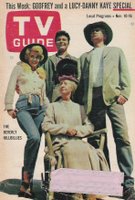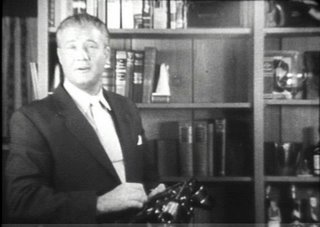
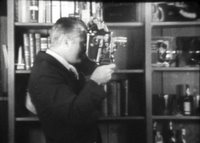
Toward the end of 1955, actor George Reeves, then starring in the
Adventures of Superman TV series, came up with an idea for a series of commercials. He and his manager, Art Weissman, formed "Candid Reporter Productions." Reeves' idea was to present himself as the "candid reporter for Kellogg's" (and possibly other products), as he filmed the stars in their homes enjoying, and reaping the benefits of, the sponsor's wares.
And what better subject for the pilot film than himself? Weissman turned the camera, as George began his day with a bowl of Kellogg's Corn Flakes - then the
Superman cereal of note. Appropriately fueled, George dons his gi and is ready for a judo workout in his back yard.

This commercial, which never aired, was filmed entirely in Reeves' home. That it was nothing more than a test is evidenced by the fact that George's hair is not dyed for his "candid reporter" introduction; nor is there any professional lighting or editing (although it does contain one lap dissolve, possibly something that could be accomplished in the camera itself). All of the footage - even George's spoken intro - was shot silent and overdubbed later.
The introduction takes place in George's den, and then, when we discover that "our guest star" is himself, we are taken to his bedroom.

Yes...
that bedroom. The one where, less than four years later, George Reeves' life came to a sudden, tragic end. This coming Friday will mark 47 years since that fateful event.
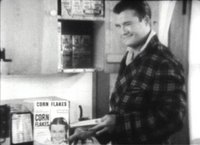
There's been a lot of debate (healthy
and unhealthy) about that day, June 16, 1959. A man, a hero, beloved by millions, left us under circumstances that were at best suspicious, and at worst nefarious. Some believe that Mr. Reeves found himself caught up in a lifestyle that was spiraling out of control and, in a moment of drunken despair, chose an irreversible escape. Others are firmly convinced that
somebody got away with murder that night. Both sides are

represented by people who actually knew Reeves personally, and by those who knew him only through their weekly, and later daily, 30-minute visits with his most lasting role. And both scenarios have been postulated by scholars and researchers who have dug deep into the mystery, sought out experts in the fields of criminology, forensics and suicide pathology... and still cannot say with certainty what exactly happened.
A theatrical film,
Hollywoodland, is expected later this year; its theme is the death of Reeves, with Ben Affleck playing the actor.
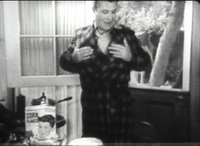
Word-of-mouth is that the film won't pull any punches regarding George's troubled last days - the man died with a blood alcohol count of .27, after all - but also shows due respect for his life.

It's a little disconcerting to watch "the candid reporter" footage today, seeing George playing in bed with his pet schnauzer, Sam, then rising up to greet the morning... knowing that one day, in that very room, he would lie on the bed and never get up.
But lately the tide has turned. The tendency now is to put aside questions about death, and celebrate the
life of a man who really was something of a Superman. A man who faced the challenge of portraying an invincible alien dressed in "a monkey suit" and did so with dignity and respect for
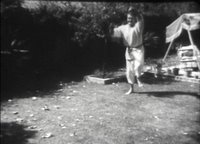
his audience. A man who took the time to visit orphanages and children's hospitals, and bring ailing youngsters face-to-face with their TV hero. A man who, even when the series had ceased production, had the grace to keep his personal life out of the newspapers, refusing to alienate his juvenile followers for the sake of cheap publicity.
This weekend, Woolstock Iowa - Reeves' birthplace - will be hosting a celebration of George's life and career, the purpose of which is to raise funds and attention toward restoring the home in which he was born. Details can be found here:
http://www.georgereevesmemorial.com/







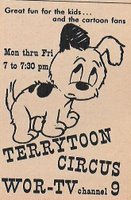
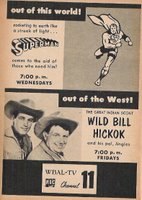

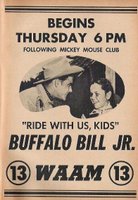







 Word-of-mouth is that the film won't pull any punches regarding George's troubled last days - the man died with a blood alcohol count of .27, after all - but also shows due respect for his life.
Word-of-mouth is that the film won't pull any punches regarding George's troubled last days - the man died with a blood alcohol count of .27, after all - but also shows due respect for his life.






